
8th Standard
Science Textbook Lesson
Chapter 11
Force & Pressure
NCERT Syllabus
- Material Type:
- Diagram/Illustration
- Textbook
- Date Added:
- 07/23/2013
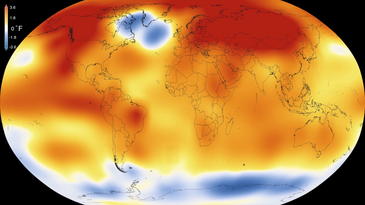

8th Standard
Science Textbook Lesson
Chapter 11
Force & Pressure
NCERT Syllabus

An alternative introduction to the chapter "Adapting and Living Together" - explained with Vamipres! It sits within the Ecology and Environment topic of the virtual school GCSE Biology. Teachers can choose which engagement video is better for their own uses and students.

Learn about how organisms adapt to their habitats. This video is part of The Virtual School's "Adapting and Living Together" chapter within our Ecology and Environment topic.
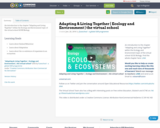
An introduction to the chapter "Adapting and Living Together" within the Ecology and Environment topic of the virtual school GCSE Biology.
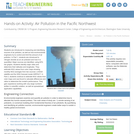
Students are introduced to measuring and identifying sources of air pollution, as well as how environmental engineers try to control and limit the amount of air pollution. In Part 1, students are introduced to nitrogen dioxide as an air pollutant and how it is quantified. Major sources are identified, using EPA bar graphs. Students identify major cities and determine their latitudes and longitudes. They estimate NO2 values from color maps showing monthly NO2 averages from two sources: a NASA satellite and the WSU forecast model AIRPACT. In Part 2, students continue to estimate NO2 values from color maps and use Excel to calculate differences and ratios to determine the model's performance. They gain experience working with very large numbers written in scientific notation, as well as spreadsheet application capabilities.
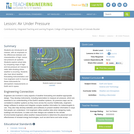
Students are introduced to air masses, with an emphasis on the differences between and characteristics of high- versus low-pressure air systems. Students also hear about weather forecasting instrumentation and how engineers work to improve these instruments for atmospheric measurements on Earth and in space.
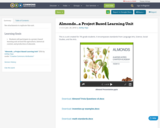
See attachments to replicate this unit.

How do animals communicate in the environment? And how does this affect their behaviour? Learn about animal communication in this GCSE / K12 Ecology video from the Virtual School.
Are you a passionate teacher who would like to reach tens of thousands of learners?
Get in touch: vsteam@fusion-universal.com
Find out more: http://www.thevirtualschool.com
Follow us: http://www.youtube.com/virtualschooluk
Friend us: http://www.facebook.com/virtualschooluk
Teach the world.
This video is distributed under a Creative Commons License:
Attribution-NonCommercial-NoDerivs
CC BY-NC-ND
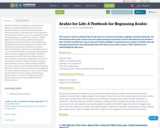
Arabic for Life takes an intensive, comprehensive approach to beginning Arabic instruction and is specifically tailored to the needs of talented and dedicated students. Unlike the other Arabic textbooks on the market, Arabic for Life is not specifically focused on either grammar or proficiency. Instead, it offers a balanced methodology that combines these goals. Frangieh has created a book that is full of energy and excitement about Arabic language and culture, and it effectively transmits that excitement to students. Arabic for Life offers a dynamic and multidimensional view of the Arab world that incorporates language with Arabic culture and intellectual thought.
The book is accompanied by a DVD with some eighty videos of native speakers reciting the vocalized texts in the book and dozens of audio recordings covering vocabulary and expressions, drills on Arabic sounds and letters, and various exercises and activities.
Bassam Frangieh is professor of Arabic at Claremont-McKenna College. He previously taught at Georgetown, Yale, and the Foreign Service Institute. He is the author of Anthology of Arabic Literature, Culture, and Thought from Pre-Islamic Times to the Present, published by Yale University Press.
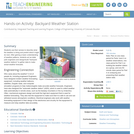
Students use their senses to describe what the weather is doing and predict what it might do next. After gaining a basic understanding of weather patterns, students act as state park engineers and design/build "backyard weather stations" to gather data to make actual weather forecasts.
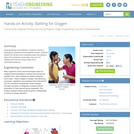
Using gumdrops and toothpicks, students conduct a large-group, interactive ozone depletion model. Students explore the dynamic and competing upper atmospheric roles of the protective ozone layer, the sun's UV radiation and harmful human-made CFCs (chlorofluorocarbons).
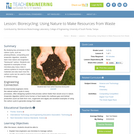
By studying key processes in the carbon cycle, such as photosynthesis, composting and anaerobic digestion, students learn how nature and engineers "biorecycle" carbon. Students are exposed to examples of how microbes play many roles in various systems to recycle organic materials and also learn how the carbon cycle can be used to make or release energy.

Students investigate the weather from a systems approach, learning how individual parts of a system work together to create a final product. Students learn how a barometer works to measure the Earth's air pressure by building a model using simple materials. Students analyze the changes in barometer measurements over time and compare those to actual weather conditions. They learn how to use a barometer to understand air pressure and predict actual weather changes.
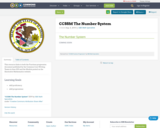
This resource links to both the Fractions progression document published by the Common Core Writing Teams in June 2011 and the Module posted on the Illustrative Mathematics website.
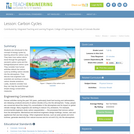
Students are introduced to the concept of energy cycles by learning about the carbon cycle. They will learn how carbon atoms travel through the geological (ancient) carbon cycle and the biological/physical carbon cycle. Students will consider how human activities have disturbed the carbon cycle by emitting carbon dioxide into the atmosphere. They will discuss how engineers and scientists are working to reduce carbon dioxide emissions. Lastly, students will consider how they can help the world through simple energy conservation measures.
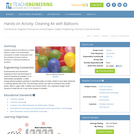
Students observe and discuss a simple balloon model of an electrostatic precipitator to better understand how this pollutant recovery method functions in cleaning industrial air pollution.
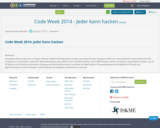
Schrauben lösen, Kabel neu verlegen: Messer, Gabel und Pudelmütze werden zum Input für den Computer. Ziel ist es, neue Benutzerschnittstellen für den Computer zu entwickeln, indem die TeilnehmerInnen einen Blick "unter die Motorhaube" einer USB-Tastatur werfen. So können Jugendliche im Alter von 13 - 17 Jahren erste Schritte im kreativen Umgang mit Elektronik machen und dabei viel Spaß haben.
Voraussetzungen sind lediglich die Freude am Experimentieren und die Neugier, technologische Grundlagen spielerisch zu erlernen.

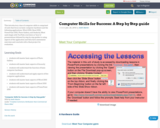
This introductory class of computer skills is comprised of units that focus on basic computer hardware and the following applications: Word 2010, Excel 2010, PowerPoint 2010, Photo Gallery, and Audacity. Most units begin with YouTube overviews or 'how to' presentations followed by step by step guides to using aspects of the application and then have assessment exercises and conclude with a final project for evaluation.
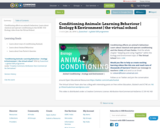
Conditioning affects an animal's behaviour. Learn about classical and operant conditioning in this GCSE / K12 Ecology video from the Virtual School.